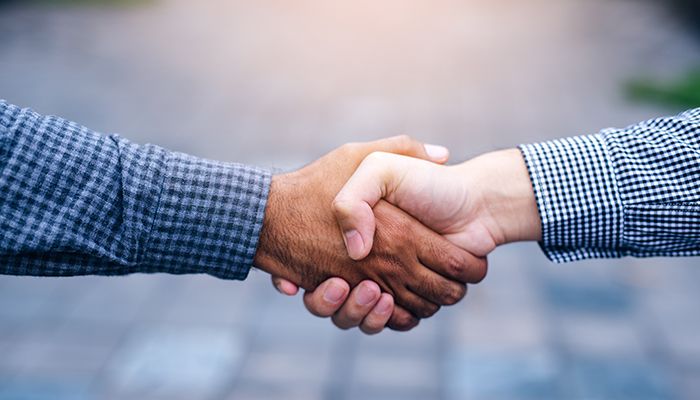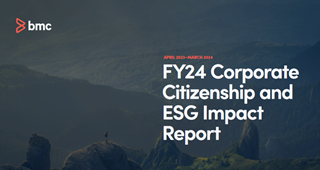2020 and the first half of 2021 have shown us incredible feats of humanity that have helped balance cultural inequality and inequity, and forced us to reassess how we treat each other. The Platinum Rule comes to mind as we think about how we want our community, our society, and the world to move forward with more awareness around social issues and challenges. It’s become clear that we have an incredible opportunity to reset our biases and perspectives, and challenge what is acceptable in how we engage with each other.
While being mostly remote, we may have lost our filters. In doing so, new or old unconscious biases—those subtle, often unintentional, but still offensive comments or actions directed at a minority or other nondominant group that unconsciously reinforce a stereotype—may have emerged. It’s even possible that within our “bubbles,” we have adopted or absorbed the biased perspective of others.
Since more of us are already or will soon be heading back out into the world more frequently, it’s important to be aware of our behaviors and look for opportunities to create a more accepting world. And it may fall on us to help others do the same when nobody else will step up. Start by checking yourself. Harvard University’s Project Implicit has several self-tests you can use to gauge your own biases. Our own checklist for self-aware leaders is here.
Open the dialogue
The first step in approaching problematic behavior is to recognize it as an opportunity for everyone to learn. You don’t want to lead with anger or respond to aggression with aggression. That’s pouring gasoline on a fire. It’s also important to level set whether the aggression is genuine ignorance, an unintended gaffe, or willful baiting that’s an overt attempt to trigger a response.
By opening a dialogue and following up someone’s demonstrative bias with interactions that facilitate cognitive thinking, both parties can help overcome that unconscious bias in the moment, at the point of impact—without attacking the person. Start from a place of understanding that unconscious bias is a human condition and, much like software, we are updating our knowledge all the time.
Examples of questions to help with the discussion include:
- “What made you say that?”
- “Can you tell me the website/news source you heard that from?”
- “Can you explain what you meant, because I’m not sure I got it?”
Be an ally
In our blog on Pride month, we talked about allyship, but allyship goes beyond one group. It’s about using your power and privilege to be an ally to people in historically untapped and excluded groups by taking on their struggles as your own; educating yourself about what you don’t know; amplifying inequalities; and fostering opportunities for change.
There are many online resources available to help you get started, including the Creative Equity Toolkit, the Guide to Allyship, PFLAG’s allyship guide, and even consumer brands Ben & Jerry’s and General Mills have some helpful tips. At BMC, we have created an Allyship Toolkit of resources to help our employees recognize and address bias. I’ve also assembled a YouTube playlist of helpful allyship and leadership video resources here.
If you’d like to do a deeper dive on the foundational concept of allyship, Dr. Cathy Royal is a must read. You can find content on her Quadrant Behavior Theory here, and a recent conversation with her on the subject is here.
Foster an inclusive environment
Diversity is a fact and inclusivity is an act. While many organizations have worked to correct their hiring, retention, and paths to promotion, inequalities still exist, and creating an inclusive workforce is an ongoing process, as we discussed here.
Building and maintaining inclusive environments can help correct and eliminate unconscious biases, but it can also stoke the fires of those who refuse to accept that diversity. If your organization needs help, try CulturePop, a self-paced, micro-learning app that encourages cross-cultural curiosity. Our BMC employees have started using it within their teams to help expand their cultural awareness. And this is a handy checklist on fostering more diverse and inclusive engagements every time you host a virtual meeting.
Turn to the experts
In a previous blog, we talked about micro-aggressions in the workplace that pile up and take their toll. Maybe you’re on the receiving end of that, maybe you’ve witnessed it—or maybe you’re guilty of doing it and are actively working to improve yourself. Bystander intervention training is a foundation of allyship, encouraging and preparing people to take action when they witness harassing and discriminatory behavior—wherever it occurs.
The Equal Employment Opportunity Commission (EEOC) supports bystander intervention training as a way to create a “sense of collective responsibility [that] motivates bystanders to step in and take action when they observe problematic behaviors [and provide] the skills and confidence to intervene as appropriate.”
While its origins stem from intervening in workplace sexual harassment, bystander intervention training has evolved to include discrimination in all its forms and can help each of us be collectively better and learn to support one another in our professional and personal lives. The training helps remove the uncertainty of not knowing when or how to intervene safely, especially in uncomfortable situations. Beyond outlining steps to take in the moment, it also provides a deeper understanding of how to discourage and even prevent future incidents and promotes a respectful, inclusive culture in the workplace and the world.
Many free bystander intervention training classes are available that offer de-escalation techniques and guidance on when and how to safely help check others—and yourself—on bias. If you’re a LinkedIn Learning subscriber, check out the “From Bystander to Upstander” course. To support non-profit bystander training, visit Hollaback! and Actions Breaks Silence.
Conclusion
Everyone’s path is different, but at the end of the day, we’re walking it together—and together we’re stronger and better. Encouraging open, honest dialogue and recognizing personal privilege as an opportunity to be an ally are important steps on that journey. At BMC, we believe the Autonomous Digital Enterprise includes everyone, and we strive to be better global citizens as we walk that path with you.







